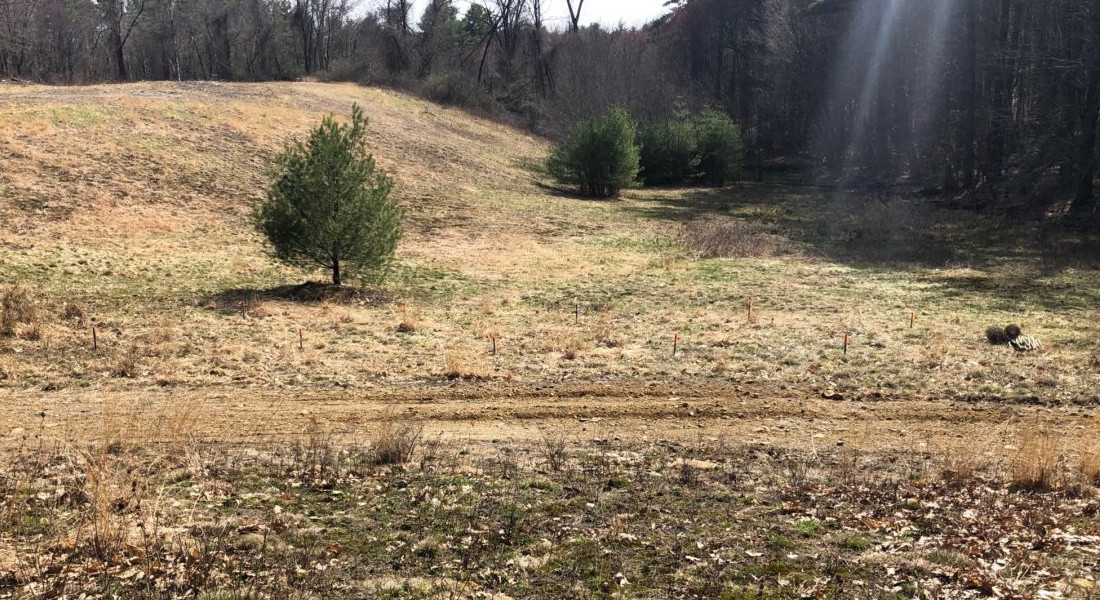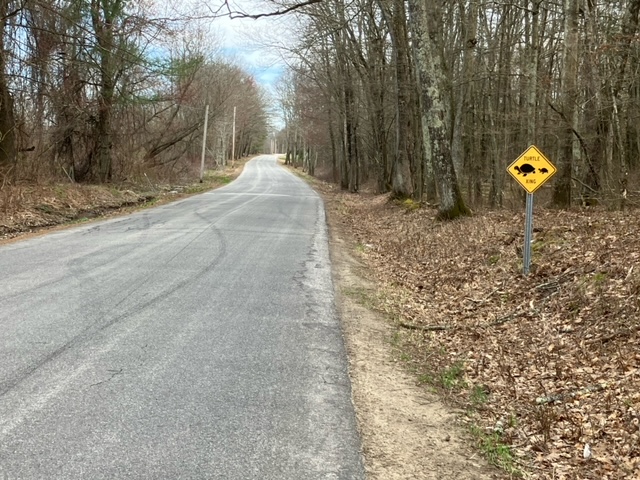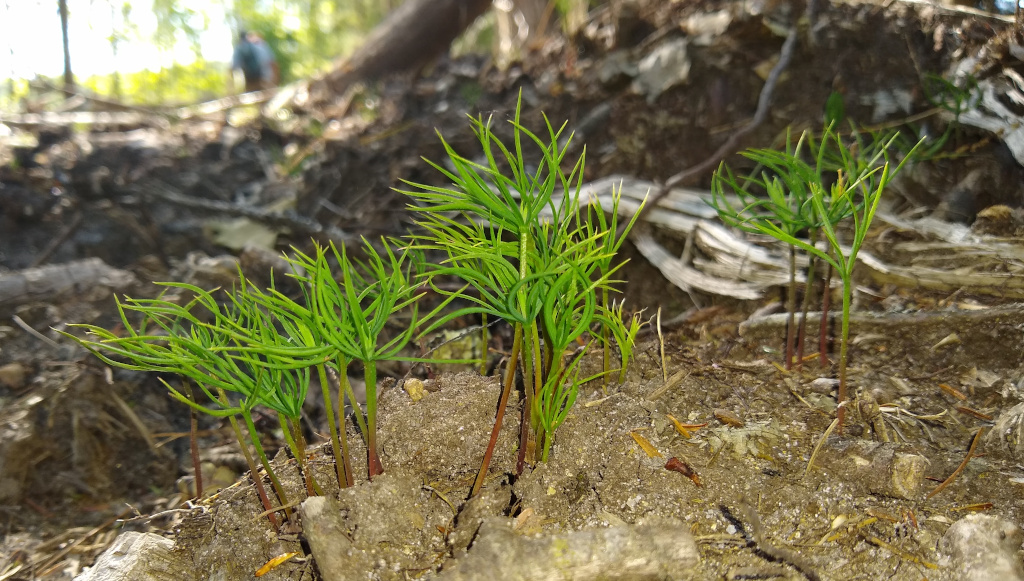



Over the years the Commission has undertaken a number of projects that go beyond routine business and forest maintenance. In some cases these projects are ongoing. The American chestnut trees planted at Weir Road Town Forest, for example, will need to be protected and monitored over the years. Hopefully, a small stand of these trees will develop in the field where they were planted. In other cases the project itself was a one time event, like our timber cuts, but the cuts were carefully planned and their effects will last for many years.
Conservation projects in Boscawen include:
A natural resource inventory is a detailed description of the natural resources - land, water, forest, historic sites, recreational sites, scenic areas, wildlife habitat - available in an area. Boscawen has a wealth of natural resources and this listing is one way to appreciate what we have and to begin to plan for its conservation so that it remains available to Town residents and visitors, today and in the future. Boscawen's NRI was compiled in 2020 by the Central NH Regional Planning Commission. On their website you can find the natural resource inventory, itself, along with an interactive storymap that displays some of the same information in a graphical way.
Boscawen's Town Forester, Charlie Niebling, has also prepared detailed inventories and management plans for the individual town forests. While the NRI gives a "big picture" overview of the Town's natural resources and includes lands outside the Town Forests, these forest plans provide greater detail about each individual forest and give more detailed management recommendations. These are available here:
Click here to return to the top of the page.

View of Mt Kearsarge across a field at the Morrill Easement
In January 2022, the Society for the Protection of New Hampshire Forests completed the purchase of a 124 acre easement on Long and Water Streets from the Morrill family. This ensures the land will continue to be used for agriculture and not become developed for other purposes. It helps maintain the rural character of Boscawen, helps ensure a supply of local food for our town, and protects one of Boscawen's most iconic views of Mt Kearsarge, shown in the image above.
This easement is important for wildlife conservation because it forms a large continuous tract of open space with the Gilmore and Hardy easements. The Morrill Easement property features 13 acres of wetland along the Beaverdam Brook and 1,800 feet of frontage on Little Pond.
Funding for the purchase of this easement came from a variety of sources including an NRCS grant of $166,000, a NH Land and Community Heritage Investment Program grant of $85,000, and funding from Boscawen's Conservation fund of just over $104,000.
The Forest Society's press release celebrating the establishment of this easement gives more information on the easement.
Click here to return to the top of the page.

American chestnut saplings at Weir Road Town Forest
The American chestnut was once widespread on the east coast and provided wood and edible nuts to early American native populations and colonists. It became nearly extinct in the early 1900s due to a fungus commonly known as chestnut blight, which was introduced from Asia, where it is native. Efforts are underway throughout the US to save the American chestnut from complete extinction. More details can be found at Forest Wildlife
Ten American chestnut trees were ordered and planted in the Weir Road Town Forest in April 2022. These are American chestnuts that have been cross bred with Chinese chestnuts that are resistant to the blight. Most of these saplings have survived and can be visited there. They are still quite small. Hopefully, they will grow to become a stand of mature chestnuts that can sustain itself.
Click here to return to the top of the page.

please slow down at turtle crossings
Boscawen is prime turtle habitat. According to the 2020 Boscawen Natural Resources Inventory and Assessment, "32 miles of named flowing brooks and rivers travel within and through Boscawen." Additionally, there are over 1200 acres of wetlands in Boscawen and 6700 acres of the town are forest.
Unfortunately, several turtle species native to New Hampshire are not doing well. There are many reasons for this, but one of the major reasons is that their habitat is divided up by roads. We can't do without the roads, but we can try to make them safer for turtles.
Turtles migrate throughout the year. They are particularly active from April to October. Most species lay their eggs in the spring and they need to find the right place to do this. It is not likely to be the same place where they spend most of their time. The eggs hatch late in the fall and the hatchlings will have to migrate as well. Turtles don't move fast, but they do get around!
Turtles don't know what to make of roads. Turtles have been around much longer than roads. If turtles have to cross a road to get where they're going they could get hit by cars while crossing. Four sites in town have been identified as being turtle crossing hot spots and signs will be put up to warn motorists to slow down and look for the turtles. Please keep an eye out for the turtles and slow down!
Check out the NH Fish & Game Turtle Page for more information about turtles in New Hampshire.
Click here to return to the top of the page.

Pine seedlings at Barnard Lot in Weir Road Town Forest. Photo taken in June 2024 after harvest the previous autumn.
Did you know that timber harvests can be used to help promote forest health? When planned carefully, timber harvests can be used to diversify the age and composition of a forest. This makes the forest more resilient and provides habitat for a wider range of species. Follow this link to the Society for the Protection of New Hampshire Forests for more information about using timber harvests for conservation.
Boscawen's Town Forests are all managed through long term plans that include occasional timber harvests. In 2017 and 2018 harvests were conducted at the Weir Road Town Forest, the effects of which can best be seen from the Dagody Hill Loop.
In 2023 another harvest was conducted at the far western edge of Weir Road Town Forest, an area known as the Barnard Lot, where the dense pine was rapidly declining without allowing new seedlings light to grow. This harvest was timed with a large pine cone crop that same year and the result is a field of pine seedlings that will replenish that stand. With less than a year's growth in them the seedlings are so small that it's easy to miss them unless you get right down to them as shown in the photo above.

These maple seedlings are taking advantage of the temporary lack of competition for sunlight, water and nutrients to flourish.

Forester Charlie Niebling, Deputy Forester Winston, and Conservation Commissioner Jeff Abbe monitoring the Barnard Lot timber harvest of 2023
There are many natural phenomena that shape mature, wild forests. Ice and wind storms can knock down individual trees and small patches. Fire can burn huge swaths of land. In our modern society we try to control these forces and minimize their effects and in doing so we hinder the forest's ability to renew itself. A fresh timber harvest can be a jarring sight, but if you look closely you'll find a new forest in miniature growing in the debris.
Click here to return to the top of the page.

Signage at the Boscawen entrance to Weir Road Town Forest.
According to their website, "the American Tree Farm System is a program for woodland owners who are committed to sustainably managing their woods for wood, water, wildlife and recreation." More information on the tree farm system can be found on their website and on the New Hampshire Tree Farm website.
Our own Weir Road Town Forest is a Tree Farm! Members of the Conservation Commission and our Town Forester actively manage the forest, as we do all of Boscawen's Town Forests. What are we doing at Weir Road? Here is a summary of recent activities as of 2024:
Click here to return to the top of the page.